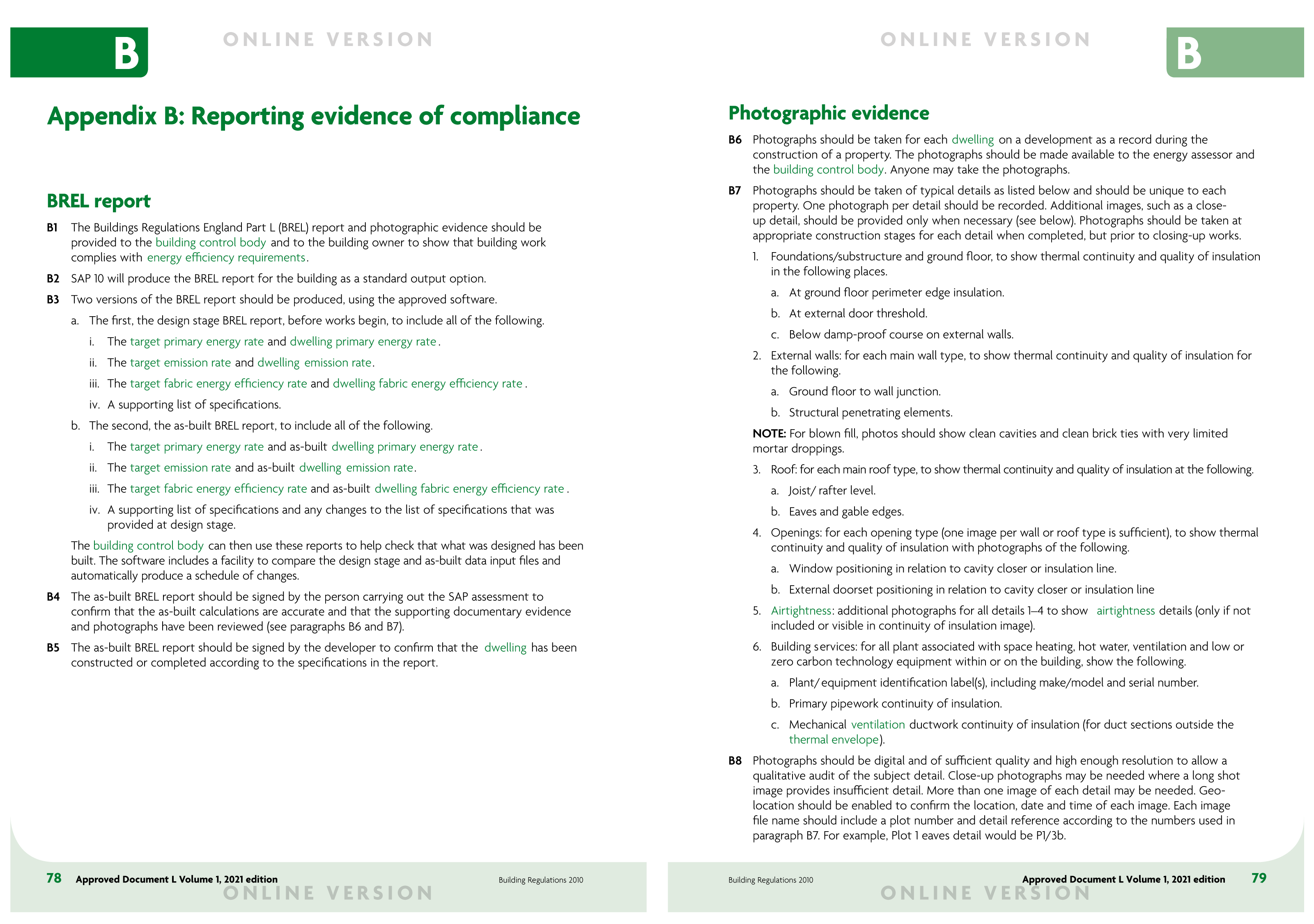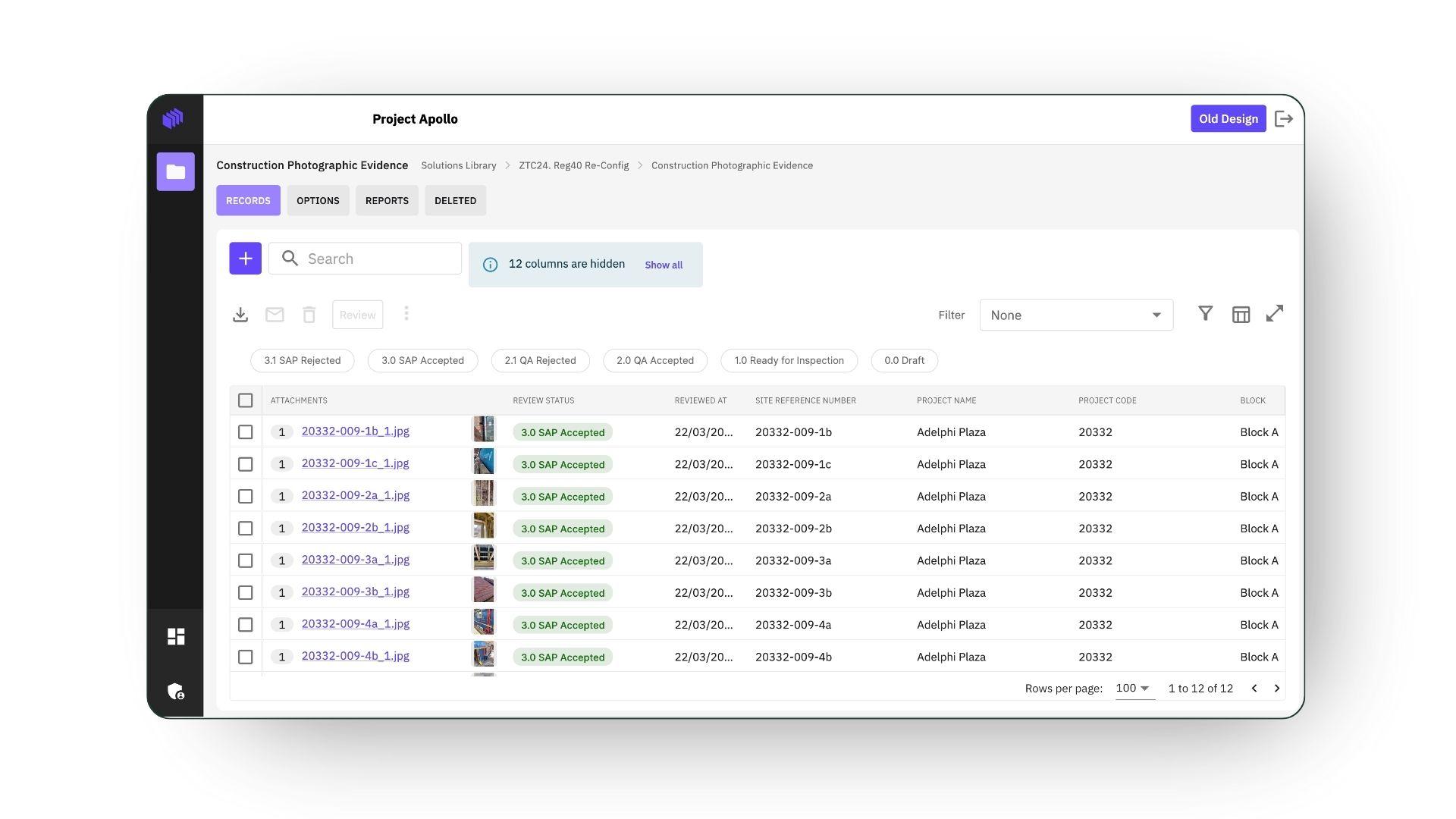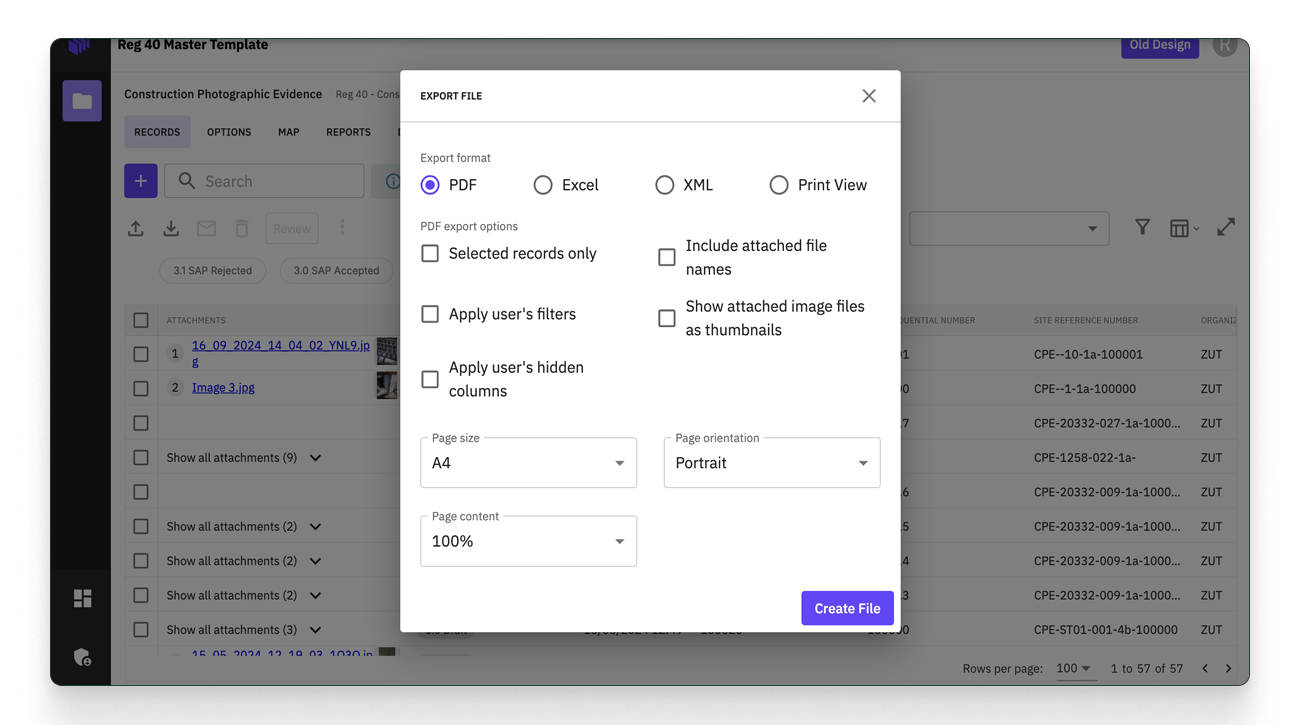For many housebuilders, Part L photographic evidence compliance presents a range of persistent challenges. Site workers often find manually capturing and uploading photographic evidence unmanageable due to the number of photos required, which can lead to missed construction details and incomplete submissions.
Tracking which photos have been submitted, if the quality meets requirements and understanding what’s still missing becomes a time-consuming task.
As a result, BREL reports suffer, increasing the likelihood of resubmissions and intrusive photos which cause project delays.
In fact, according to a recent Industry Viewfinder report by Housebuilder & Developer magazine, BREL photo reporting emerged as the biggest obstacle for housebuilders and developers in meeting the updated Part L building regulations.
71% of housebuilders said they experience BREL photo reporting issues, and 21% said they find this aspect of compliance particularly challenging. A lack of modern construction methods was cited as a barrier to their ability to comply with the new Part L.
Our own research confirms this. In a snapshot survey conducted with housebuilders in September 2024, 81% reported still facing challenges with Part L, with more than a third identifying the need for quality photos and managing thousands of images as the most difficult aspect.
Why manual Part L photo uploading is a major headache
Manually uploading Part L photos is a time-consuming and error-prone process for site workers. Part L compliance requires photographic evidence across six key stages to ensure the construction reflects the design-stage SAP calculations and that insulation and building services are properly installed. Photos must be high-resolution and clearly show the following:
- Foundations/substructure (thermal continuity).
- External walls (insulation quality).
- Roof structure (thermal performance).
- Openings (window/door positioning).
- Airtightness (if not visible in other photos).
- Building services (plant labels and insulation).
These images are mandatory for the BREL report and regulatory compliance. They are also given to homeowners as evidence of the quality and energy efficiency of their new homes.
For more information on the 6 photo stages for Part L compliance as well as photographic evidence guidance, read our blog, ‘Part L Building Regulations — How-to guide for reporting evidence of compliance’.
Knowing which photos should be taken and when is just the beginning. Quality and tagging of photos are also essential so that photos demonstrate how a home has been built.
Taking Part L photographic evidence just using a phone can create several issues. Quality can be poor and photos often get lost in crowded photo reels, making it difficult to locate them later.
Also, without proper photo labelling, it becomes more difficult to identify which plot the image belongs to or what specific construction detail is being documented.
This disorganisation causes confusion, making it difficult to compile the BREL report during compliance checks and increasing the risk of missing key evidence.
Without a clear system and proper process, important photos can get lost or rendered unusable, leading to submission delays, inaccurate BREL reports, and potentially requiring resubmissions or costly rework.
Part L Photographic Evidence made simple
Capture, store, share, and manage Part L photographic evidence with a dedicated solution to speed up BREL report submissions.
What is the BREL report?
As of June 15, 2022, anyone building new homes in England must now produce reports that demonstrate compliance with the updated 'Part L' Building Regulations, which focus on energy efficiency.
These regulations are part of a broader government initiative aimed at reducing the carbon footprint of new and refurbished homes, with a final uplift of standards coming into force sometime between 2025 and 2027 as part of The Future Homes Standard.
The changes require that homes are built to use less energy and generate lower carbon emissions.
Compliance Reports and SAP Assessments
To meet these new standards, compliance reports must be generated through SAP (Standard Assessment Procedure) assessments. SAP is the UK government's method for assessing and rating the energy performance of residential buildings.
For each new home, two specific reports are required:
- Design Stage BREL Report: This report must be produced before any construction work begins. It outlines how the proposed design will meet the Part L requirements for energy efficiency.
- As-Built BREL Report: Once construction is completed, this report must be signed by both the SAP assessor and the builder to confirm that the building was constructed in accordance with the design and meets energy efficiency standards.
For more information you can refer to Appendix B: Reporting evidence of compliance in The Building Regulation 2010 approved document L.

Both reports are crucial for ensuring that the new homes comply with the latest regulations, and copies must be provided to the homeowners as proof that their homes meet the new energy efficiency standards under Part L.
However, it’s the as-built BREL report that requires photographs to be taken for each dwelling on a development as a record during the construction of a property.
Photographs should be digital and of sufficient quality and high enough resolution to allow a qualitative audit of the subject detail.
The impact of poor documentation on BREL reports
In the housebuilding industry, accurate and reliable documentation is vital, particularly when it comes to Building Regulations and Energy Performance (BREL) reports.
These reports are essential for obtaining necessary approvals, such as building control sign-offs, and the Energy Performance Certificate (EPC) required for selling homes.
However, poor documentation practices can have a significant negative impact on the timely completion and accuracy of these reports, leading to potential financial and operational setbacks.
When do you need an Energy Performance Certificate (EPC)?
An Energy Performance Certificate (EPC) rates a property's energy efficiency from A (best) to G (worst) and is valid for 10 years. It is required when selling, renting, or building a property, and must be ordered before marketing the property to potential buyers or tenants.
The EPC provides information on energy use, typical costs, and recommendations to improve energy efficiency.
One of the most common issues in gaining an EPC on each building is the lack of integrated documentation systems and the use of paper-based processes on-site to bring the information together for assessment.
Many site managers still rely on basic methods such as manual spreadsheets, email exchanges, or outdated apps that don't sync data effectively. As a result, photos and other important data may be stored in multiple locations, with no clear audit trail or geolocation tagging or time stamps.
This disorganisation can cause delays and confusion when assembling the necessary documentation for BREL reports and EPC. For instance, missing geo-coordinates on photos may require someone to manually retrieve and reattach them, adding unnecessary work and increasing the risk of errors.
If documentation is not properly collected during the construction process or if the photo quality is poor, site managers may need to carry out intrusive work to obtain the necessary evidence.
This not only leads to increased costs but also delays the approval of the BREL report, EPC, and other vital certifications, directly impacting the salability of homes.
For housebuilders, the inability to issue an EPC due to incomplete or disorganised documentation can result in significant cash flow problems. Without the necessary certifications, homes cannot be sold, leaving capital tied up in unsold properties.
For example, if a developer has multiple homes waiting for certification, they could see millions of pounds locked in assets that cannot be converted to cash until the documentation is sorted and approved.
This raises an important question: Are the systems and processes you’re using on-site effectively tracking progress and helping you meet compliance requirements and advancing homes through the buying stages?
Zutec’s integrated solution for streamlined Part L compliance
Poor documentation not only disrupts the workflow of compiling BREL reports but can also have far-reaching consequences. It can lead to financial strain, delays in project handovers, and potentially costly rework.
Implementing efficient, integrated quality management solutions to document work done is crucial for avoiding these pitfalls and ensuring smoother project management from start to finish.
Using the Zutec field app on-site to capture photographic evidence
On-site, site teams and subcontractors can use a smartphone or tablet to capture georeferenced photos with dedicated Part L forms and templates.
These tools guide teams through each build stage for various details and link the evidence directly to the relevant BREL report. This plays a key role in ensuring the correct photos are captured at the right time.
Drop-down options in the templates and forms and automated geotags make it easy to capture and record photos with the correct associated information across the project, plot and location, which is essential for submitting to reviewers and SAP assessors. Subcontractors can highlight areas of interest and sign-off using a secure PIN, simplifying work tracking.
With Zutec's app, an internet connection is not required. Contractors can complete several tasks and upload them once the device reconnects, with data automatically syncing to the cloud.
Zutec’s Part L Photographic evidence log

The Zutec app captures georeferenced photos to ensure compliance with Part L. This allows easy sharing, reviewing, and submission of evidence for EPC and BREL reports.
The platform is customisable, enabling users to set review points and share information directly with SAP Assessors or internal Quality Assessors. This flexible review process ensures any required remediation can be completed before work is finalised.
Zutec provides a real-time audit trail and robust tracking capabilities, ensuring that all photographic evidence is documented and approved transparently from data capture to final approval.
This enhances project management and accountability, making information readily accessible to both on-site teams and senior management.
Managing workflows, reviews, and submissions
A customisable dashboard provides an overview of completed work, making it easier to manage projects efficiently. Users can filter by project, code, or plot, review records, add comments, and send notifications.
This helps streamline BREL report sign-off by identifying issues early and receiving real-time feedback or approvals as work progresses.
Notifications are fully automated, allowing for real-time updates or scheduled emails, making it easy to stay on top of tasks.
Once all evidence has been approved, submitting everything to the building control body is straightforward with the Zutec Construction Photographic Evidence (CPE) report.
The platform allows you to generate a comprehensive PDF report that consolidates all inspections and photographic records for a specific site or plot.

Simply select the relevant site or plot, and with just a few clicks, export a neatly organised file containing all required documentation. This ensures that everything is ready for submission in the correct format, saving time and minimising the risk of missing critical evidence.
By centralising all documentation and photographic evidence on a single platform designed for Part L compliance, Zutec streamlines the process of gathering and submitting evidence for approval, particularly when managing multiple projects.
This results in enhanced collaboration and traceability allowing site teams and management to focus on more productive tasks, ultimately driving projects toward successful completion.
If you’d like to learn more about our Part L Compliance solution and how it can help you simplify your Part L photographic evidence obligations, download our booklet here.
With Zutec you can try it out on one project and scale later. Find out how you can test a solution quickly on a smaller scale before you commit to full-scale implementation here.
Or, if you want to get started with Zutec right away, book a demo here and one of our experts will be in touch.